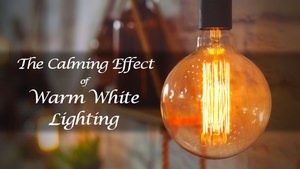The right bulb can make all the difference in solving your lighting needs. But which is better, Daylight or Full Spectrum?

Sometimes it may seem like Daylight and Full Spectrum are merely different ways of describing the same type of light. After all, they are both meant to be as close to actual natural sunlight as possible, right?
While their color temperature is the same there are significant differences that cause these two types of lights to be better suited for different applications.
Because of their distinct uses it is important to properly understand the exact contrasting features so you can make a more informed decision when purchasing one of these lights.
So, what are these differences and why do they matter? Today, we will look at what Daylight and Full Spectrum bulbs are - the similarities and differences - as well as their applications.

What are Daylight and Full Spectrum Lights?
Daylight bulbs
Like the name says, Daylight bulbs are lights that give off a color temperature of light anywhere between 5000k and 6500k. The lighting industry measures the color tone that is given off by a light on the kelvin scale. The lower the number, the warmer the color of light. Likewise, the cooler, brighter white lights have a higher number on that scale.
For a more in depth look at the different color temperatures in lighting, see here.
Daylight bulbs are often thought of as the closest manufactured light to natural sunlight on a cloudless day, hence the name. They are the bulbs that many think of when they hear the word LED.
Full Spectrum lights
As Wikipedia points out, it is very hard to nail down a solid definition of Full Spectrum bulbs. Sometimes it is easier to show comparisons between two different lights to truly describe this kind of light.
Full Spectrum bulbs are designed to shine the visible and invisible wavelengths of color just as the sun does. They portray objects in the radius of one of these lights in a more accurate way.

What’s the Difference?
When comparing Daylight and Full Spectrum lights there are a few factors to consider. A common misconception is that because both Daylight and Full Spectrum have the same color temperature, that they are functionally the same.
However, there is much more to Full Spectrum lights than just the color temperature of the light that is given off.
An important component when thinking about their differences is CRI. CRI stands for Color Rendering Index and is used to tell you how close the light is to accurately displaying the true color of the object. The higher the number the closer the light will be to naturally rendering the shades of the object.
Daylight bubs often have a CRI in the 80s while many Full Spectrum lights have a CRI in the 90s. This gives Full Spectrum bulbs more credibility as quality light sources.
Full Spectrum bulbs have higher light quality that better mimics natural sunlight because of its high CRI, color temperature, and the full scope of color it shines.
Many people struggle with the brilliance and light quality of Daylight bulbs, adversely affecting their eyes. Conversely, Full Spectrum bulbs are designed to be relaxing to the eyes to reduce stress.
5000K-6500K lighting is designed for maximum brightness but not necessarily ultimate comfort. This is where Full Spectrum lights really shine. The way they are made produces light closer to natural sunlight that has positive effects on a person and the environment.
Since these two light sources are distinctive that also means that they have different uses.

Daylight and Full Spectrum Light Applications
Both Daylight and Full Spectrum bulbs have distinct applications. Using cool toned Daylight bulbs in your home kitchen has always been popular. This color temperature is also commonly found in office spaces and retail stores. Some parking garages are also benefitting from 5000k LED tubes.

Full Spectrum lights serve several purposes and provide numerous health benefits. SAD, which stands for Seasonal Affective Disorder, affects over 10 million Americans every year. This condition presents itself in the winter months of the year when the days are shorter and the sun is seen less. Some effects of low sun exposure are depression and lack of motivation.
This is where Full Spectrum bulbs come on the scene to mimic the natural sunlight that is needed for our health. Using these bulbs in your home, especially during the cold winter months can help reduce stress, and provide similar health benefits that your body is missing from the lack of sunshine.
Another use for Full Spectrum lights is in plant growth. Generally, they are called grow lights although they have many Full Spectrum qualities. They greatly benefit those cultivating plants in a controlled environment.
Conclusion
Hopefully the information presented here is helpful when you consider buying a Daylight or Full Spectrum light. Both have their uses in the lighting industry providing the consumer with different benefits.






